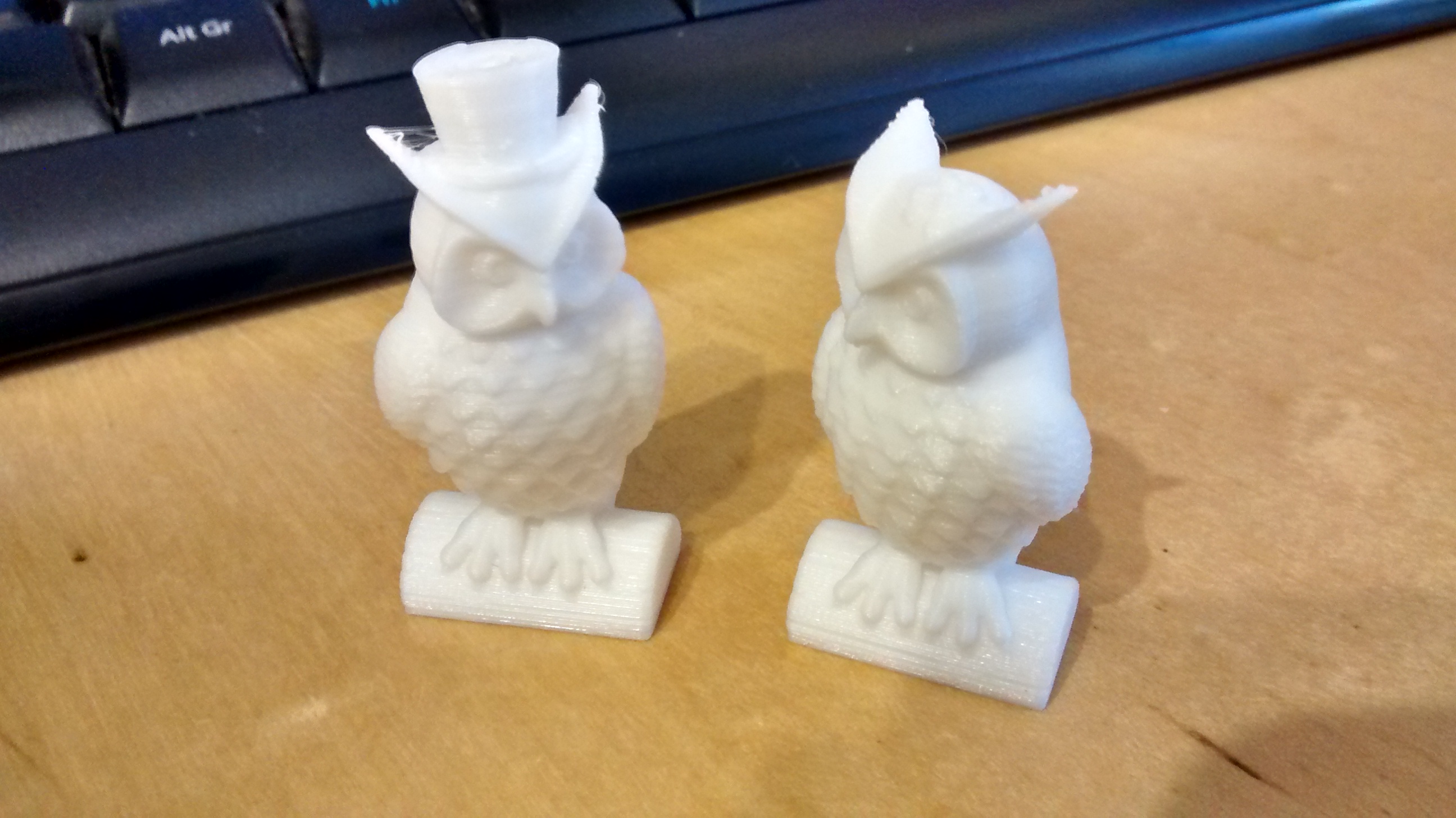Introduction
The next stage is to actually print something. That's surprisingly untraumatic.
First, I printed the sample that came with it - to prove the machine works rather than because I wanted a small pair of plastic owls.

And I'm quite impressed, the detail is quite fine and it prints well. They are a little "whispy" at the top, but a light trim and a little more bed leveling should fix that.
Slicing
But the samples are just that: a pregenerated GCODE file on the SD card. To print something I made, I need more software: a slicer.
The printer recommends Cura, so off I go: Ultimaker CURA 4.0
It's free, and the installation is painless - and it knows about the machine I bought so I don't have to add machine parameters. Bonus.
Knock up something small in Fusion:

Just a little box with my moniker on it!
Getting to the slicer is easy: File menu in Fusion:

Select "3D Print".

Check "Send to 3D Print Utility", and choose "Cura" from the dropdown (in theory, I can do all this inside Fusion with an addon, but ... little steps.)
Cura opens, loads the file:

Click "Slice", and moments later:

It's ready to save to card (Again, I could do it via USB, but ... little steps, little steps.)
Card into machine, "Print" and wait a while:

The text looks blurred because I ran over it with a permanent marker and then quickly sanded off the worst of the overspill. I also only extruded it as a 0.5mm cut which is a little shallow; I think I sanded off a little too much on one side - I'd go for 1.0mm or more next time, and probably see if I could do a "V" cut which would probably work better.
Given that I made it 20mm x 20mm x 20 mm, with a 1mm wall thickness, it's pretty solid, even in PLA.
So ... Conclusions on First Attempt
Get familiar with your CAD tool - and my opinion of Fusion 360 has done a 180o turn in just a morning, it's a powerful tool that is equally easy to use when you get your head round it - and this isn't as difficult as I thought: at least not for small, relatively simple objects.
Now for the big one: the Sous Vide cover. And that'll wait for Part 3 ...
Other Parts
History
- 2019-09-18: Updated to revised series part names, fixed a couple of typos and spelling mistakes
- 2019-09-17: Added Part 1 link
- 2019-09-17: First version
